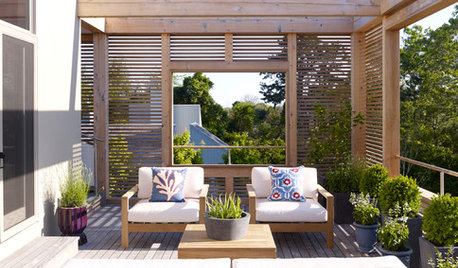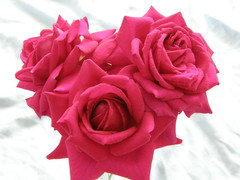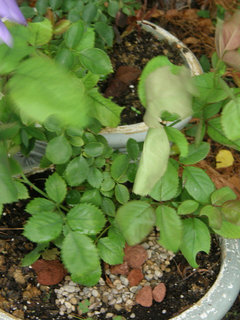Salt-index of chemical fertilizer & soluble for hot weather
strawchicago z5
10 years ago
Featured Answer
Sort by:Oldest
Comments (37)
strawchicago z5
10 years agolast modified: 9 years agoRelated Discussions
Fertilizering Containerized Plants IV
Comments (332)The biological world that needs to happen in such a perfect manner and consistently is makes no use to use any organic fertilizer in containerized plants. You’d be surprise at how much money is made on that and how much money people spend. There is a lot more to it than what I said but I have spent hundreds of dollars with no good results I wish I had saved before I ever discovered this particular forum. Not a one person I know very successful with perfect growing container plants uses organic fertilizers anymore except for in ground. One good fertilizer that gives your plants everything they need is all that is needed. Then of course growing conditions plays a huge part too Mike...See MoreGrow deep roots, reduce salt, and reduce watering
Comments (9)Happy Holidays, to Chris and Kim. I appreciate Kim's experience and logic. My neighbor ordered a big pile of dirt mixed with mushroom compost (horse manure & brown bedding). I tested the pH of his dirt, it's slightly less blue in red cabbage juice than mine (pH 7.7). At first he got the darkest green lawn in the neighborhood. But his lawn looked worst when there's hot weather and no rain, thanks to the salt content. Mike_Rivers, a retired chemist, mentioned that horse manure is 1/4 the salt of other manures, with chicken manure the highest (per University of Colorado's data). I thought I could turn my azaleas and rhododrendrons dark-green by using acid fertilizer Lilly Miller 10-5-4 with chicken manure, but I killed 2 rhodos by using it 3 times: 10+10+10 equals 30 in Nitrogen, that's much higher than the 0.7 nitrogen per horse manure application. Sulfur is useless in turning my acid-plants dark green, it's the chelated iron that does the job. I tested Espoma garden sulfur on my acid plants, and they are still yellow. For salt content, most damaging is urea and ammonium nitrate, around 80% salt index, it's like dumping a cup of salt on your rose bush. The lowest in nitrogen is anhydrous ammonia at 47%, but I don't see listed anywhere. Phosphorus: superphosphate is lowest in salt, at 7.8, and triple superphosphate at 10. For potassium, monopotassium phosphate (52% P and 35% K), has lowest salt at 8.4, and potassium chloride, use to de-ice in cold zone is a killer with 116.2%. For organic sources, grass clippings, alfalfa, leaves are lowest, then blood meal, then horse manure, cow manure, and highest salt is chicken manure (also highest in nitrogen). Here is a link that might be useful: University of Illinois data on salt index...See MoreWhere can you get Cheap Natural Fertilizers and Soil Amendments?
Comments (0)One of our composting experts and friends on this site, David Hall (DcHall_San_Antonio), recently gave a great list of some of the major benefits from soil high in organic matter: ************************************************************ "Chemical fertilizers rely on an assumption that plants only need three elements to survive and thrive. Nitrogen, phosphorus, and potassium are those three. This is the equivalent of saying that we need protein, fat, and sugar to live. While this may be mostly true, pure protein, pure fat, and pure sugar do nothing to supply the vitamins, minerals, and diverse supply of bacteria and fungi in our diets. Here is a list of a dozen things that you can do with organically fed soil that cannot be achieved with conventional chemical feeding. 1. Decompose plant residues and manure to humus. 2. Retain nutrients in the form of stable humus. 3. Combine nitrogen and carbon to prevent nutrient loss. 4. Suppress fungus and bacterial diseases. 5. Produce plant growth regulators. 6. Develop soil structure, tilth, and water penetration/retention. 7. Clean up chemical residues. 8. Shift soil pH to neutral and keep it there. 9. Search out and retrieve nutrients in distant parts of the soil. 10. Decompose thatch and keep it from returning. 11. Control nitrogen supply to the plants according to need. 12. Pull minerals out of inorganic soil components for plants. Soil microbes need sugar and protein to thrive. When you apply synthetic ferts, none of the things on this list gets done. The microbes normally get sugar from plant roots. Protein in nature comes from dead insects, plants, and animals. The organic gardener applies protein artificially in the form or organic fertilizers. It is usually in the form of a ground up meal made from plants and animals to try to replicate the natural process." ******************************************************* With that being said, many times it is difficult to find good organic or natural fertilizers and soil amendments from garden stores because most of the garden people that we meet are non-organic users. Therefore as an organic gardener, we have to be creative in order to find our supplies. This is a simple list of sources for uses in foliar teas, composting and green manure techniques, and other soil amendments: 1. Deer plot mixes or cheap bird seed bags - 50 lb bag is a great source of economical cool season cover crop seeds. Most contain a mixture of legumes and grasses like crimson clover or hairy vetch or winter peas, oats, winter wheat, and rye. Most bird seeds contain sunflowers or millet or other types of non-legume seeds that can be planted as excellent cheap cover crop seeds. Bird seeds make great composting ingredients too for extra protein-nitrogen to speed up compost decomposition. 2. Catfish or pond fish feed - Excellent source of alfalfa meal and fish meal for topdressing or compost teas. Like cat and dog foods, some people may not consider it a truly organic soil food source. But it does contain lots of protein and micronutrients. 3. Cat or Dog foods - Some people would not consider this a truly organic source of soil nutrients. It does contain lots of protein and micronutrients. There are some amounts of corn gluten meal in these feeds. (NOTE: Probably not enough to really do the job of weed seed suppression control in lawns or gardens.) 4. Seaweed - If you can't collect it free from the beach, you can buy economical packs of fresh seaweed from oriential markets for compost teas. (To be on the safe side, it is a good idea to always wash your seaweed first to remove any salt.) Take all your remains from your teas and recycle them into your compost piles. If you liquify the seaweed in a juice, you can use the whole product as a foliar feed or soil drench. Even though most fertilizer companies rate seaweed with a NPK of 0-0-1, it contains at least 1% total N and over 3% total P. Seaweed may contain as much as 60 trace elements. Seaweed and other algae plants are some of the greatest soil amendments on earth, or should I say in the ocean. Seaweed also contains beneficial growth hormones and benefical fungal food sources for soil microbes. 5. Fish emulsion - Commercial brands contain no fish oil and little or no aerobic bacteria. Homemade versions supply extra beneficial oils for beneficial fungi and fish bones for extra calcium. Free fresh fish parts are the best if available. However, cheap canned fish products will do fine. Experiment with canned mackerel, sardines, herring, etc. If the fishy smell is a big issue, just mix your fish products with a lot of high carbon sources like sawdust, leaves, or straw in a 5 gallon closed bucket. You can add molasses to your fishy mixture to speed up decomposition by increasing the microbial growth in the mixture. The molasses will also control the fishy odors. Let this mix decompose for at least a week or more before adding to the hot compost pile or to your compost tea recipes. The extra carbons will help absorb the offensive odors as well as keep most of the organic nitrogen in your compost pile or your compost teas. Also the aerobic bacteria kill break down any bad pathogens that may exist in decaying fish meat. Read the other FAQ's on aerated teas and homemade fish/seaweed emulsions also. 6. Fava beans, soybeans, and other legume cover crops - Mostly all bagged dry beans and peas in grocery stores will sprout and make great warm season green manures. Fava beans and soybeans can found in oriential markets or health food markets. 7. Horse and cattle feeds - These contain a great supply of alfalfa meal and corn meal and other proteins for soil amendments or compost teas. The whole corn or oat seeds in the bags, may sprout and give you an extra green manure benefit. The extra molasses ingredient from the feeds draws and breeds lots of beneficial soil organisms. Molasses also contains sulfur which acts as a mild natural fungicide also. NOTE: Check the label also for total salt content in the feeds. Most grain meals that I get are no salt (less than 0.7%). 8. Corn meal - very cheap source for a nitrogen activator for heating up the compost pile or as a topdressing. Great natural fungicide also. Corn meal is a great phosphorus source also. 9. Liquid molasses, dry molasses powder, brown sugar, corn syrup - source of fast consuming sugars for feeding and breeding the aerobic bacteria in compost teas. Most microherd populations love the high carbon content in sugar products. Sugars are best dissolved and broken down by microbes in compost tea that has brewed at least 1-3 days, before applying to the soil. If too much sugar is added on soil straight as a topdressing, it may cause a temporary nitrogen deficiency in the soil as the microherd populations grow too fast. Molasses also contains sulfur which acts as a mild natural fungicide also. Molasses is also a great natural deodorizer for fishy teas. NOTE: Recent studies have shown that unsulfured molasses or dry molasses powder is best for faster aerobic microbial growth in tea brewing. For a more fungal tea don't add too much simple sugar or molasses to your aerobic teas. Use more complex sugars, starches and carbohydrates like in seaweed, rotten fruit, soy sauce, or other fungal foods. 10. Alfalfa meal - best source is 50 lb bags of rabbit food or alfalfa hay bales. There are also 100% alfalfa pet litter or beddings if available. Alfalfa products are best used in teas, mulches, or as topdressings. Alfalfa is an excellent natural complete fertilizer, containing great amounts of N, P, and K, and many growth hormones and micronutrients. 11. Blood and Bone meal - this classic combo can be found almost everywhere these days. However blood meal is very expensive. Bone meal can be even cheaper if purchased in 20 lb bags from feed stores. Since blood meal is totally soluble, it can be added to compost tea recipes.. With a NPK around 11-0-0, it has the highest total nitrogen ratio of all natural fertilizers, and may burn plants if used improperly. Steamed bone meal has a recorded NPK around 0-11-0. Usually steamed bone meal has a total N from 1-6%, 11% soluble P but 20% total P, and 24% calcium. Raw bone meal has more total N but none of the P is water soluble. 12. Urine or Urea - yes, human urine is an excellent source of organic nitrogen for compost teas or as a free nitrogen activator for composting (45% N). (NOTE: Unlike human manure, any pathogens, diseases, or other mild toxins in human urine are quickly killed and digested within 24 hours after they escape the human body. Therefore human urine is very safe for all types of composting methods.) 13. Animal Manures - High in N and great sources of P and K and soil microbes. Use only vegetarian animal manures, like cattle or horses, in order to be on the safe or conservative side for all your gardening uses! Chickens are not vegetarians. However chicken manure is a safe, classic, high nitrogen, highly alkaline farm animal manure. Chicken manure is ok, mainly because the foods that chickens consume are easily broken down by normal gardening composting systems. DO NOT EVER USE ANY PET MANURES OR DOG OR CAT POOP! It is extremely dangerous to humans. There are special hot composting procedures that must be performed to use toxic, pathogen or disease prone, heavy metal manures like pet poop and human manures. So don't do it! Always compost animal manures first or use aged animal manures before applying to the soil or as an ingredient in foliar teas. 14. Grass Clippings and Green Weeds - Excellent sources or organic N for special foliar teas or use as an organic mulch/top dressing. Some gardeners even hot compost strange weeds and herbs like kudzu, bull thistle, dandelions, comfrey, stinging nettle, thorns, ivy, etc. 15. Wood Ashes - Wood ashes, not charcoal ashes, are great organically recommended soil amendments. Wood ashes contain up to 70% calcium carbonate or calcium oxide (natural liming agent) and lots of potassium. If you have native acidic soil, a little sprinkled wood ashes are perfect for your lawn or garden as a soil amendment or liming agent. However, if your native soil is highly alkaline, never put wood ashes straight on your soil! Wood ashes is absolutely safe in a hot compost pile. A hot compost pile always buffers the pH of its ingredient organic matter materials so that the mature compost has a near neutral pH. The main disadvantage of composting wood ashes is that the high alkaline ashes will chemically react with high nitrogen products in the pile like animal manures or grass clippings, thus creating excessive ammonia gases that will be wasted and evaporated out of the pile. Therefore if you compost wood ashes, only use a few cups of ashes per cubic yard of compost piles. The above soil amendment products can also be buried straight in the garden soil for trench composting. You can also bury these materials in planting holes under the roots of heavy feeder transplants like tomatoes for extra NPK for plant growth. You can poke holes in the soil around crop roots with your spade fork, to get more oxygen in the soil to further increase organic matter decomposition and increase microbial activity in the soil. All natural soil amendments as well as homemade compost, do more than just fertilize the soil and growing plants. Most natural soil amendments have a total NPK rating sum total less than 20 (i.e. fish emulsion NPK = 5-1-1, compost NPK less than 4-4-4). Don't be fooled by the numbers. Most P and K ratings only record the soluble available portions in the products. The N portion recorded could be either the soluble, insoluble, or total N portions as based on the company. The insoluble non-reported portion of OM is continuously consumed and broken down with the existing OM in the garden soil, thus raising the available soluble nutrients for further season crops. Happy Gardening!...See MoreFertilizer plans for pots vs.. in-ground, rain & tap, own-root & graft
Comments (16)High nitrogen can hurt root and flowering ability in cotoneaster plant. See excerpt from below link: http://www.sciencedirect.com/science/article/pii/0304423881900649 " Although root growth was not increased by either Nitrogen or Phosphorus, high N levels inhibited root growth." More link to show that too much phosphorus can hurt root & flowering: https://laidbackgardener.wordpress.com/2016/05/18/the-myth-of-starter-fertilizers/ "further studies showed that large quantities of phosphorous were not necessary for rooting. Yes, the soil must contain a small amount of phosphorus in order to stimulate rooting… but that’s also true of any other nutrient. If the soil totally lacks nitrogen, zinc or iron, that too will hamper rooting. In fact, plants actually root poorly in soils excessively rich in phosphorous. You’re far more likely to kill plant roots with 10-52-10 fertilizer than to stimulate their growth. " http://davesgarden.com/guides/articles/view/3788/ " When plants are grown in low phosphorus environments they emit organic acids from their root tips. These acids allow mycorrhizal fungi to penetrate the roots and form the networks that assist roots in absorbing water and nutrients. If the phosphorus levels are too high the roots do not emit the acid and the mycorrhizal networks do not form. This forces the plant to put more effort into root growth to compensate for the lack of mycorrhizae." U. of Colorado Extension has excellent info. on Organic fertilizers: "recent CSU research has shown that phosphorus from bone meal at NPK 3-15-0 is only available to plants in soils that have a pH below 7.0." On rock phosphate: Recent CSU research results concluded that no rock P (regardless of mesh size) is available for plant use unless the soil pH is below 7.0. http://www.ext.colostate.edu/mg/gardennotes/234.html According to CSU, Kelp powder has NPK of 1-0-4, decent potassium, plus trace elements, only need 1/4 to 1/2 teaspoon per gallon, due to its high salt. **** From Straw: I tested bone-meal many times, with negative result in my soil pH near 8. 1) killed over a dozen geraniums by topping with bone-meal in hot summer .. that burnt their roots, but their colors were vivid at first. 2) put bone-meal in the planting hole of Sharifa Asma, the color DID NOT deepen, but really wimpy root, plus the soil got hardened. 3) Killed a $30 gallica rose gifted by a friend with bone-meal in the planting hole. 4) Made Crimson glory really wimpy by putting bone meal in the planting hole. 5) Made wimpy Yves-pink-seedling into a Black-spot fest by moving it, then put bone-meal in the planting hole. CONCLUSION: phosphorus is best in small amount as in 1/10 of potassium in rose-tissue analysis done by U. of CA at Davis. Phosphorus is best AS soluble, as in leaves, manure. Chicken manure at NPK 5-3-2 has plenty of phosphorus, plus trace elements zinc, copper, and boron....See Morestrawchicago z5
10 years agolast modified: 9 years agostrawchicago z5
10 years agolast modified: 9 years agostrawchicago z5
10 years agolast modified: 9 years agostrawchicago z5
10 years agolast modified: 9 years agostrawchicago z5
10 years agolast modified: 9 years agostrawchicago z5
10 years agolast modified: 9 years agostrawchicago z5
8 years agostrawchicago z5
8 years agostrawchicago z5
8 years agolast modified: 8 years agojim1961 / Central Pennsylvania / Zone 6
8 years agostrawchicago z5
8 years agojim1961 / Central Pennsylvania / Zone 6
8 years agolast modified: 8 years agostrawchicago z5
7 years agostrawchicago z5
7 years agolast modified: 7 years agostrawchicago z5
7 years agolast modified: 7 years agoAnna
7 years agostrawchicago z5
7 years agoAnna
7 years agoValRose PNW Wa 8a
7 years agoKhalid Waleed (zone 9b Isb)
7 years agostrawchicago z5
7 years agoAnna
7 years agolast modified: 7 years agostrawchicago z5
7 years agostrawchicago z5
7 years agostrawchicago z5
7 years agopurilisaVA-zone7B
6 years agostrawchicago z5
6 years agolast modified: 6 years agostrawchicago z5
6 years agolast modified: 6 years agoKhalid Waleed (zone 9b Isb)
6 years agostrawchicago z5
6 years agolast modified: 6 years agostrawchicago z5
4 years ago
Related Stories

LANDSCAPE DESIGNNatural Swimming Pools: More Beauty, No Chemicals
Keep your skin and the environment healthy with a pool that cleans itself, naturally
Full Story
GARDENING GUIDESHow to Switch to an Organic Landscape Plan
Ditch the chemicals for a naturally beautiful lawn and garden, using living fertilizers and other nontoxic treatments
Full Story
GARDENING GUIDES5 Ways to Naturally Win the Weed War
Show irksome weeds no mercy with these tricks for combating them sans chemicals
Full Story
MONTHLY HOME CHECKLISTSYour Fall Home Maintenance Checklist
Prep your house and yard for cold weather with this list of things to do in an hour or over a weekend
Full Story
GARDENING AND LANDSCAPINGWhat to Know Before You Buy Teak Outdoor Furniture
Learn about finishes, weathering, care and that age-old oil debate to get the teak furnishings that suit you best
Full Story
EDIBLE GARDENSHow to Add an Apple Tree to Your Edible Garden
Readily available, beautiful and fragrant, apple trees offer four-season interest along with crisp, juicy fruit
Full Story
GARDENING GUIDES7 Ecofriendly Gardening Ideas That Also Cut Chore Time
Spend less time weeding, less money watering and more moments just sitting back and enjoying your healthy garden
Full Story
SPRING GARDENINGHow to Grow a Rose Garden in Pots
Everything can come up roses, even without a plot of soil in sight. This step-by-step guide to growing roses in containers shows you how
Full Story
GREEN BUILDINGWorld of Design: The Joy of Moss and Its Modern Uses
This great design plant is 400 million years in the making. See how it’s inspiring art, soothing spaces and building design
Full Story
GARDENING AND LANDSCAPINGBid Bad Garden Bugs Goodbye and Usher In the Good
Give ants their marching orders and send mosquitoes moseying, while creating a garden that draws pollinators and helpful eaters
Full Story















seaweed0212